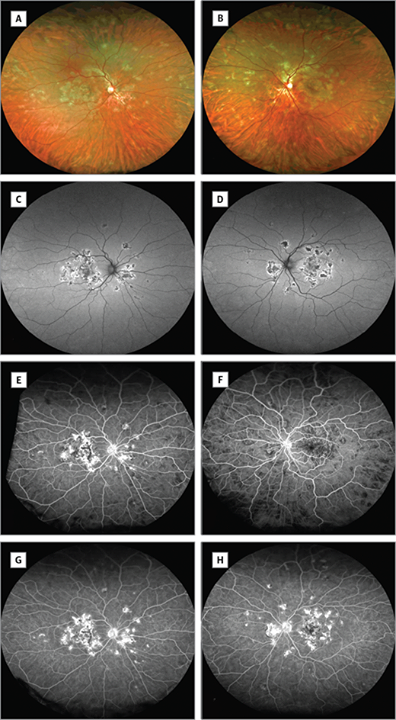We were pleased to see the ultra-widefield retinal images captured through optomap technology featured on the JAMA Ophthalmology Facebook page recently. According to a case study, the images were captured in the exam of a 25-year-old man who had experienced bilateral blurred vision for a few weeks.
An optomap exam helped reveal the cause of his blurred vision – acute posterior multifocal placoid pigment epitheliopahty (APMPPE) in both eyes. Ultra-widefield (UWF™) imaging, as well as other exams, presented results characteristic of funduscopic findings. Images captured at both the initial and follow-up exams revealed three types of lesions on the patient’s eyes:
- White on color photos, hypofluorescent early and isofluorescent late on fluorescein angiography (FA), as well as isoautofluorescent on fundus autofluorescence (FAF) – These lesions were primarily located anterior to the baseline, and diminished later on.
- White lesions on color photos, hypofluorescent early and staining late on FA, as well as hypoautofluorescent on FAF – These lesions eventually became atrophic.
- Pigmented lesions on color photos, hypofluorescent early and late on FA, as well as hyperautofluorescent on FAF – Initially, these lesions were located at the margins of the placoid lesions in the left eye, while occurring more centrally in the right. Later exams showed they appeared to be migrating from the periphery to the center of the placoid lesions.
The patient’s best-corrected visual acuity at the time of the exam was 20/400 OU. At a follow up appointment 16 weeks after the initial exam, his visual acuity improved to 20/25 OU.
You can check out JAMA Ophthalmology’s website to read more on this case.
Are you interested in adding the only Ultra-widefield retinal imaging to your ophthalmology practice and becoming better equipped to diagnose APMPPE and other similar issues? Contact Optos today to learn how our innovative ultra-widefield imaging technology and devices can benefit your diagnostic capabilities.
